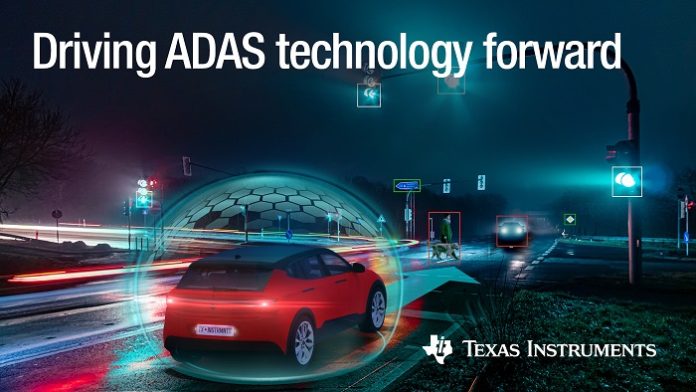In an effort to move autonomous driving and vehicle safety forward, Texas Instruments (TI) today announced an expansion of its automotive offerings that can help automakers improve how advanced driver assistance systems (ADAS) sense objects.
TI’s new AWR2944 radar sensor adds to the company’s extensive portfolio of analog and embedded processing products and technologies, giving automotive engineers more tools that can fuel vehicle innovation. The increased ability to quickly detect objects, monitor blind spots, and efficiently navigate turns and corners paves the way for automakers to achieve their vision of a collision-free future.
“Changing lanes and navigating tight corners present some of the most complex design challenges for our customers today,” said Yariv Raveh, manager for TI millimeter-wave radar. “To create a safer driving experience, driver assistance systems must quickly and accurately process massive amounts of data and clearly communicate with the driver.”
According to the Federal Highway Administration, more than 50% of the combined total of fatal and injury crashes occur at or near intersections¹. With new motor vehicle safety requirements from U.N. Regulation No. 79 and updated New Car Assessment Program (NCAP) standards in effect, automakers must improve steering systems to support advanced driver assistance and automated driving functions. To learn more about the latest safety requirements, read the technical article, “What ADAS engineers need to know about the new NCAP requirements for radar.”
The 77-GHz AWR2944 radar sensor can help automakers meet these safety regulations and provides best-in-class radio frequency performance in a small form factor – approximately 30% smaller compared to radar sensors today. The AWR2944 sensor integrates a fourth transmitter to provide 33% higher resolution than existing radar sensors, enabling vehicles to detect obstacles more clearly and avoid collisions. In addition, the new sensor’s unique hardware supported by Doppler division multiple access (DDMA)-based signal processing improves the ability to sense oncoming vehicles at distances up to 40% farther away.
Empowering automakers to develop vehicles with increased visibility of their surroundings, TI’s solutions for ADAS include high-performance integrated system-on-chip radar sensors, highly efficient edge artificial intelligence processors, and automotive-qualified power-management ICs (PMICs) such as the LP87745-Q1 low-noise, multi-rail PMIC for radar monolithic microwave processors. To learn more about recent innovations in ADAS technology, read the blog post, “ADAS: The technology driving automotive safety forward.”
“Visibility around corners has historically been challenging for autonomous and semiautonomous vehicles. This challenge presents the opportunity to design high-quality, premium ADAS technology that helps enhance vehicle perception,” said Curt Moore, manager for Jacinto™ processors at TI. “For automated parking and driving, being able to see farther with devices like the AWR2944 sensor – and then seamlessly process that data with our Jacinto processors – leads to improved awareness and safety.”
From supporting airbag deployment to enabling cutting-edge vehicle electrification, TI’s deep-rooted history of innovation in automotive technology spans more than 40 years. TI’s software compatibility enables automakers to scale across their entire fleet, while extensive support and design resources including technical content, evaluation modules and real-world application examples make designing ADAS easier. With the future in mind, TI believes collaboration between semiconductor suppliers, system engineers and automakers will be vital to accelerate time to market and meet ever-evolving regulatory demands.
For more information, visit: http://m.ti.com/








